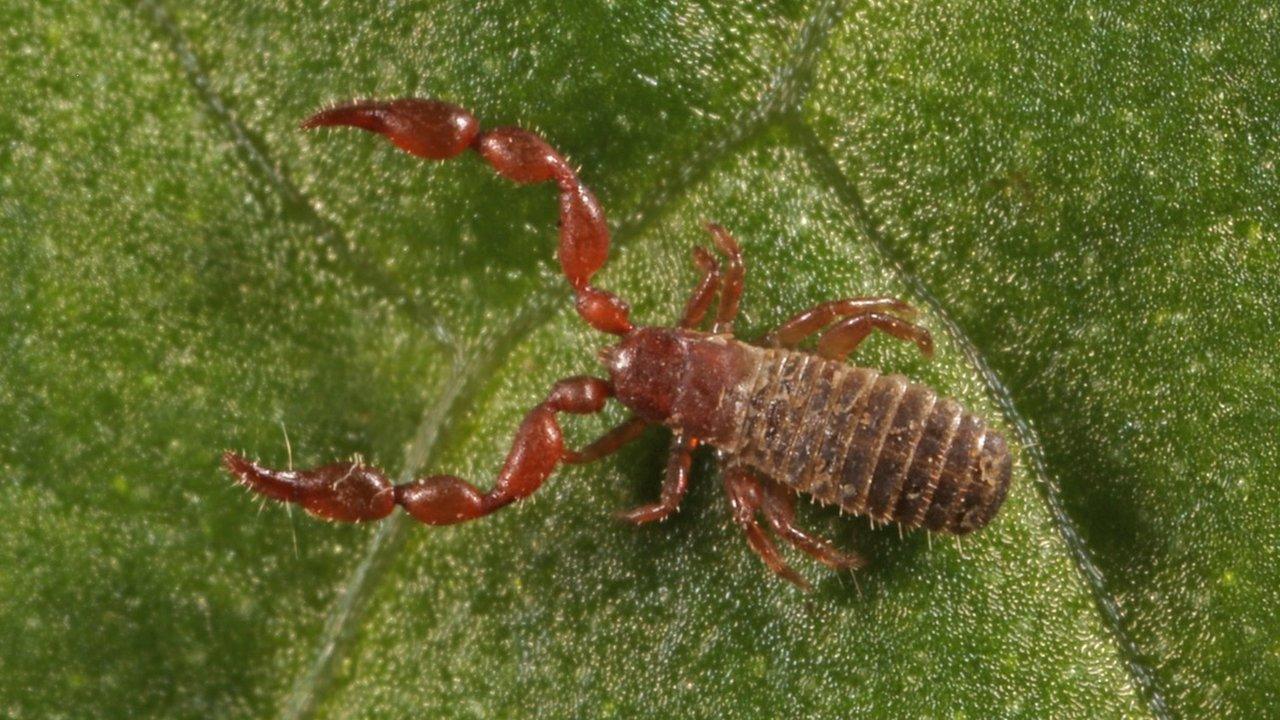Scotland's non-biting midges
- Published
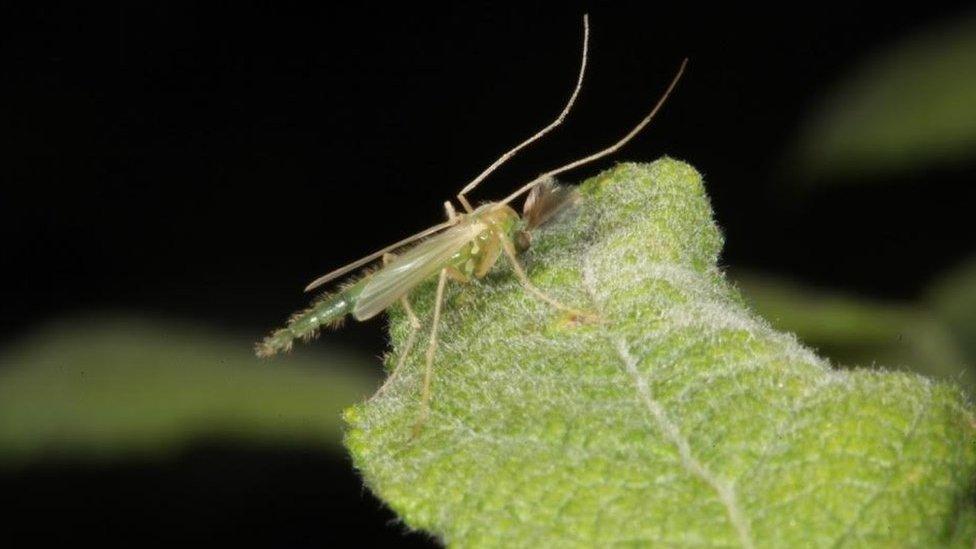
One of the 17 species of non-biting midge found at Dundreggan, a wooded area of the Highlands
Last week it was revealed that Scotland has a previously unrecorded species of midge. But there is no need to reach for the insect repellent, this beastie is one of about 10,000 species of a non-biting variety of the tiny fly.
The biting midge, which swarms the Scottish Highlands in its millions during the summer, is Scotland's most infamous creepy crawly.
They are a pest to walkers and campers from late spring through to autumn, with their bites leaving itchy red lumps on skin.
But Scotland is also home to Chironomids, a "family" of non-biting midges that worldwide numbers thousands of species.
The greatest threat these beasts pose to humans is landing in drinks at a barbecue.
"You will see these midges on warm evenings in columns, dancing," says Alan Watson Featherstone, founder of Findhorn-based Trees for Life.
The conservation charity's Dundreggan Estate in Glenmoriston, near Loch Ness, is where the UK's newest species of non-biting midge was discovered.
Chironomus vallenduuki was recorded for the first time in the UK by eminent entomologist Peter Chandler during a survey he made of the wooded estate last year.
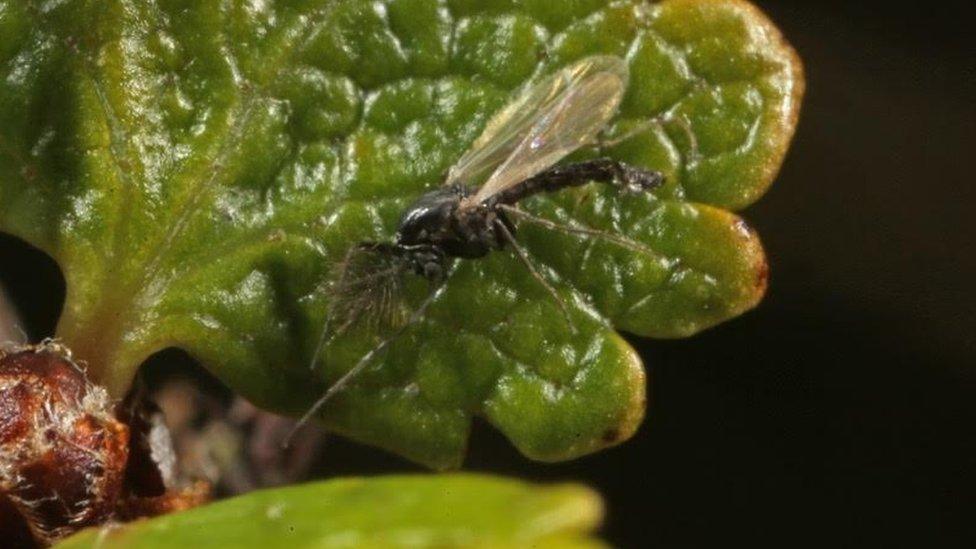
Some species of non-biting midge feed on nectar and pollen
It is now one of 17 different species of Chironomids recorded at Dundreggan.
Mr Featherstone said: "This new species has not just arrived in the UK. It has been around for a long time waiting for someone to identify it.
"Peter Chandler knows where to look for midges and at Dundreggan made a sweep of a small pool with a net. He may find other species when he returns for another survey this year."
Globally, there are about 10,000 known species of Chironomids inhabiting all types of environments.
While the biting varieties favour moist, peaty ground, the larvae of Chironomids can be found inhabiting water-filled holes in trees and even sewage.
"It was thought that adult non-biting midge did not feed at all," says Mr Featherstone. "But recent research has shown that some species do feed - but this is on nectar and pollen."
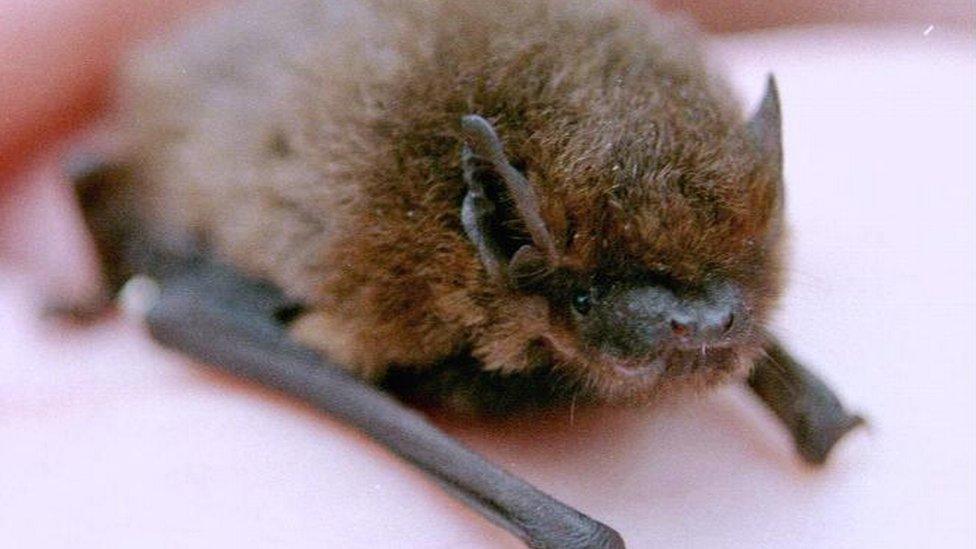
Midges - biting and non-biting varieties - are a food for bats and other wildlife
Dundreggan has four known species of the dreaded biting midge.
Mr Featherstone says: "They include, in particular, Culicoides impunctatus - the Highland biting midge.
"Ninety-nine percent of people bitten by a midge in Scotland will have been bitten by this species."
But both biting midges and the more harmless non-biting species play important roles in biodiversity, says the conservationist.
"In their larval stages in water they are food for fish, newts and water beetles. Once on the wing, they are eaten by birds, bats and dragonflies," he says.
"They may seem inconsequential but they support the creatures that we like to see, such as swallows and dragonflies. Who doesn't want to see dragonflies hunting?"
But Mr Featherstone says the discovery of the new species has also highlighted that much remains unknown about Scotland's wildlife and habitats.
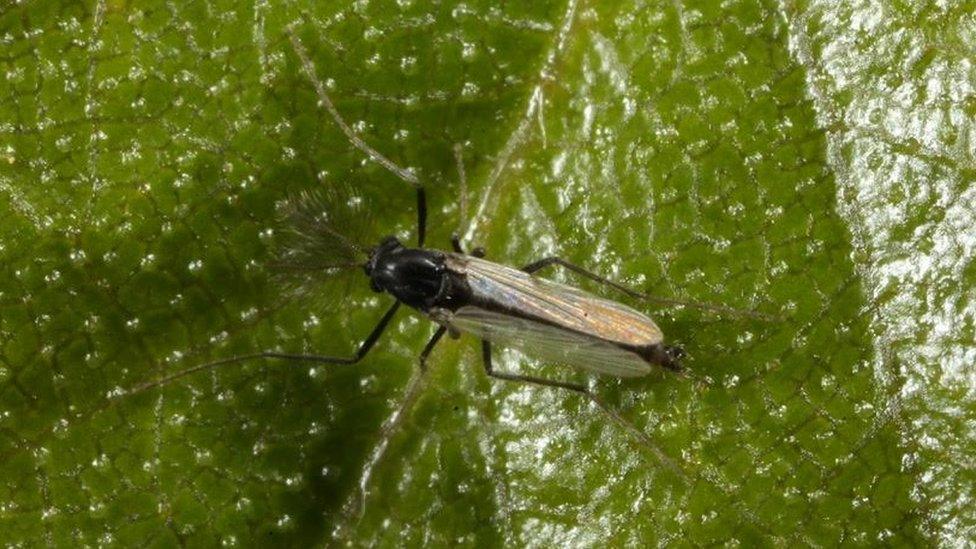
Non-biting midge often emerge on warm evenings throughout the year
Meanwhile, the thoughts of midge experts and the wider public is beginning to turn to this year's hatchings of Scottish biting varieties.
Dr Alison Blackwell, an expert on these beasts, says Scotland has about 40 species of biting midge.
"The main species is the Highland biting midge, the one with the spotty wings and the one most people will be familiar with," she says.
Weather conditions this month and in April will influence when, and in what numbers, biting midges begin emerging.
Dr Blackwell says people could see the flies by mid-May but later in that month and possibly June if the weather is cold in the weeks before.
The scientist adds, reassuringly: "The midges people have been seeing recently are the Chironomids, non-biting midges.
"They will emerge whenever it is warm enough."
- Published23 February 2017
